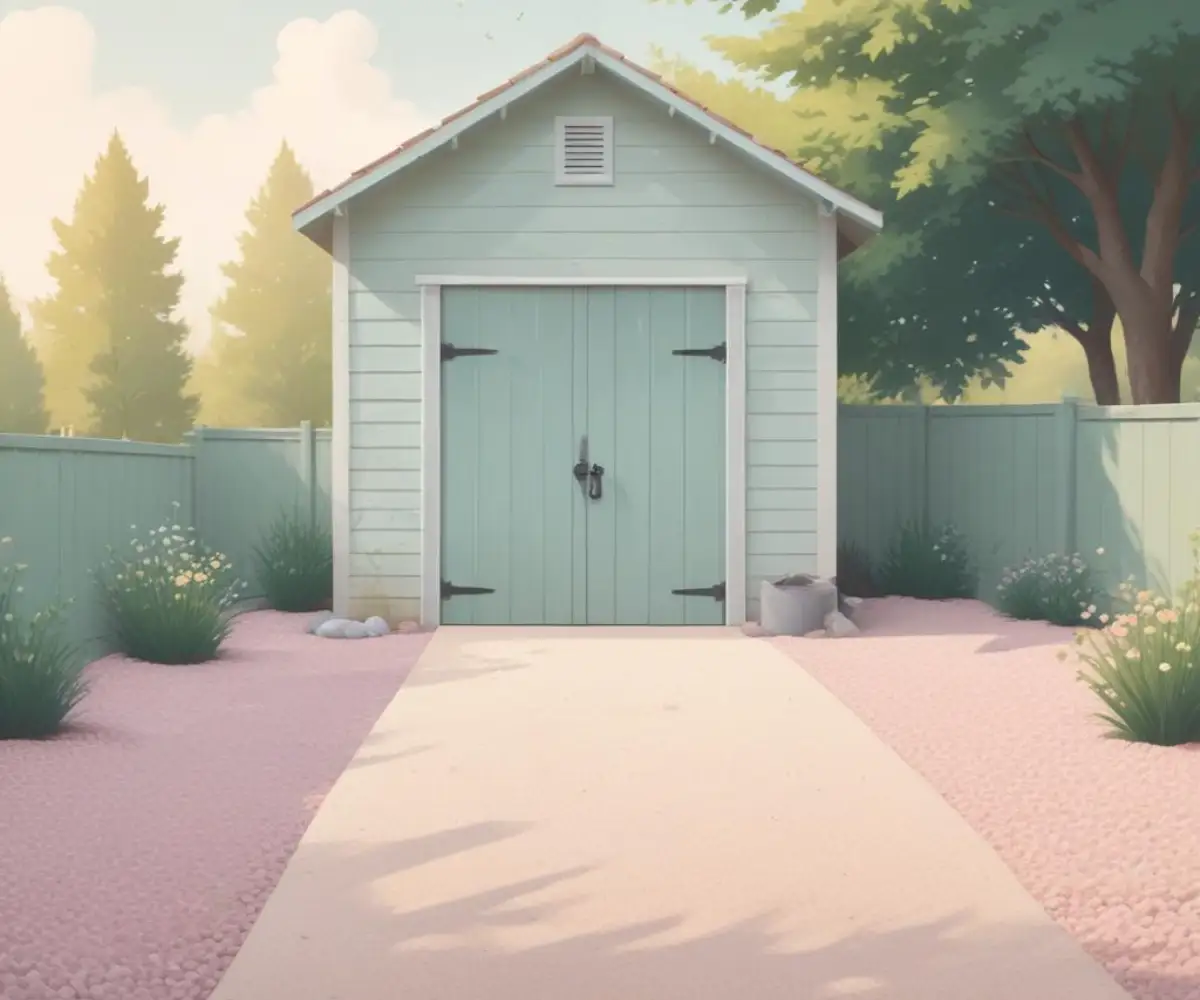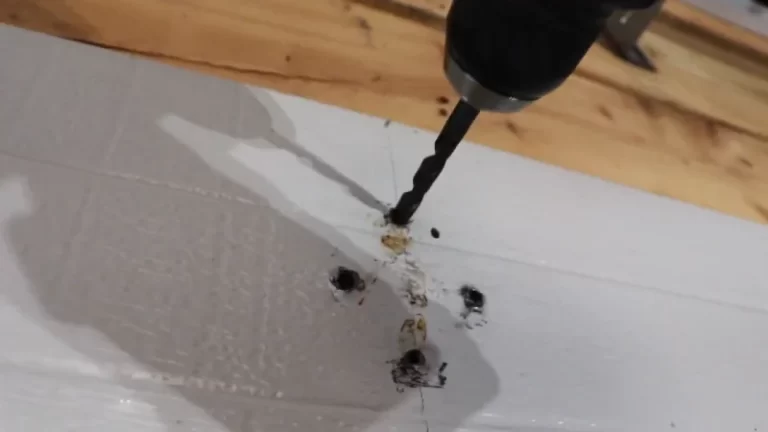Suncast 7×7 Shed Foundation Sinking? Your Ultimate Fix
You’ve just brought home the Suncast 7×7 shed, a promise of organized bliss and a clutter-free garage. You open the box, lay out the parts, and then you see it in the manual: the non-negotiable requirement for a solid, level foundation. Suddenly, the simple weekend project feels a lot more complex.
This is the moment where a successful shed installation and a frustrating failure diverge. An improper base is the number one cause of problems, leading to a shed that warps, doors that refuse to close, and water damage that ruins your stored belongings. This guide provides the expert-level detail you need to build a perfect foundation, ensuring your shed stands strong for years to come.
You'll Learn About
Why a Flawless Foundation is Non-Negotiable for a Resin Shed
Unlike a rigid wooden or metal shed, a resin shed like your Suncast 7×7 has a degree of flexibility. While this makes it durable against dings and dents, it also means the shed’s structure will conform to the surface it sits on. Placing it on uneven ground is a recipe for disaster.
The most immediate and frustrating problem you will face is with the doors. If the base isn’t perfectly level, the entire shed frame will twist slightly, causing the doors to misalign. They won’t latch, they’ll leave gaps, or they won’t open and close smoothly, defeating the primary purpose of the structure.
Furthermore, an unlevel base creates pressure points and unsupported gaps beneath the shed’s floor panel. This can lead to the plastic floor cracking over time, especially under the weight of heavy items like a lawnmower. More importantly, it can compromise the shed’s weather resistance, allowing water to seep in from below and damage your valuables.
The Critical Detail Most Suncast Owners Overlook
If you flip over the Suncast floor panel, you’ll notice it’s not a flat sheet of plastic. It’s a grid of hollow squares, designed for rigidity and material efficiency. This design is precisely why uniform support is absolutely essential.
Many people assume they can just level a few patio stones and be done with it. This is a critical error. Placing the shed floor on a few high points leaves the grid sections in between completely unsupported. Over time, with changing temperatures and the weight of your belongings, these unsupported sections can sag and even crack, compromising the entire structure.
Choosing Your Foundation: A Head-to-Head Comparison
The right foundation for your Suncast 7×7 shed depends on your budget, DIY skill level, and ground conditions. Each option has distinct advantages and disadvantages that you must weigh before starting. A poorly chosen base can be just as problematic as a poorly built one.
Below is a comprehensive breakdown of the most common foundation types. This will help you make an informed decision that aligns with your specific needs and ensures a stable, long-lasting home for your shed.
| Foundation Type | Average Cost | DIY Difficulty | Durability | Pros | Cons |
|---|---|---|---|---|---|
| Gravel & Timber Frame | Low to Moderate | Moderate | Excellent | Excellent drainage; corrects for slight slopes; very stable. | Requires significant labor for excavation and material transport. |
| Concrete Slab | High | High (Pro recommended) | Exceptional | Most durable and permanent option; provides a built-in floor. | Expensive; can crack if not poured correctly; not easily removed. |
| Concrete Pavers | Moderate | High | Good | Aesthetically pleasing; can be done in stages. | Leveling individual pavers is tedious and difficult to perfect. |
| Wood Deck | Moderate to High | Moderate | Good | Ideal for very sloped or uneven ground; elevates the shed. | Wood is susceptible to rot and pests if not properly maintained. |
The Ultimate DIY Base: A Step-by-Step Gravel Foundation Guide
For most homeowners, a contained gravel foundation—often called a gravel pad or shed base—offers the perfect balance of durability, drainage, and affordability. It provides the solid, uniform support your Suncast shed needs and is a very manageable DIY project. Follow these steps precisely for a flawless result.
Step 1: Site Selection and Preparation
First, choose the best location for your shed. Look for a relatively level area with good drainage, ensuring water doesn’t pool around it after heavy rain. Check with your local municipality or Homeowner’s Association (HOA) for any restrictions on shed placement or size.
Use stakes and string to mark out the dimensions for your foundation. It is highly recommended to make the foundation slightly larger than the shed’s footprint. For a 7×7 shed, an 8×8 foot foundation provides a helpful border and a more stable perimeter.
Step 2: Excavation for Stability
This is the most labor-intensive part, but it’s also the most important. You must remove the topsoil to get to the stable subsoil beneath. Using a square-head shovel, excavate the entire marked area to a depth of at least 4 to 6 inches.
As you dig, frequently check that the bottom of your excavated area is roughly level using a long, straight 2×4 and a carpenter’s level. This doesn’t have to be perfect yet, but getting it close will make the next steps much easier. Ensure all grass, roots, and large rocks are removed.
Step 3: Building and Leveling the Timber Frame
The timber frame acts as a permanent container for your gravel, preventing it from spreading out over time. Use pressure-treated 4×4 or 4×6 lumber for this. Cut your lumber to create the square perimeter of your foundation.
Fasten the corners together using 10-inch galvanized spikes or long structural screws. To ensure your frame is perfectly square, measure the diagonals from corner to corner. The two measurements must be identical. If they are not, adjust the frame until they match.
Place the frame into the excavated area and begin the critical process of leveling it. Use your long 2×4 and level, placing it across the corners and along the sides of the frame. Add or remove soil underneath the timbers as needed until the entire frame is perfectly level in all directions.

Step 4: Adding Weed Barrier and Drainage Stone
With the frame perfectly level, line the entire inside of the excavated area with a high-quality landscape or weed barrier fabric. This will prevent weeds from growing up through your foundation and stop the gravel from mixing with the soil below. Overlap any seams by at least 6 inches.
Now, add your first layer of stone. This should be a 3/4-inch crushed angular stone, often called #57 stone. This larger stone facilitates excellent drainage. Fill the frame about halfway (a depth of 2-3 inches) with this stone.
Step 5: The Final Compacted and Leveled Layer
The top layer needs to be a material that compacts tightly to create a solid, stable surface. Use a 1/4-inch crushed stone with dust, often sold as “paver base” or “crusher run.” This mixture of small angular stones and fine dust locks together firmly when compacted.
Add this material on top of the #57 stone until it is slightly above the top of your wooden frame. Rake it out evenly. Now, use a hand tamper or a rented plate compactor to thoroughly compact the entire area. This is a crucial step that prevents future settling.
Once compacted, use a long, straight 2×4 to screed the surface. Rest the board on opposite sides of your wooden frame and slide it across the top, scraping off the excess gravel. This will leave you with a perfectly flat, level surface that is flush with the top of your frame, ready for your shed.
Common Mistakes That Will Ruin Your Suncast Shed Foundation
Building a foundation is straightforward, but small mistakes can lead to big problems. Avoiding these common errors is just as important as following the steps correctly. A little extra diligence now will save you from major headaches later.
The number one mistake is failing to excavate. Simply placing blocks or a frame on top of the grass will lead to rapid settling and an unstable base. The organic topsoil will compress and shift, causing your shed to become unlevel within months.
Another frequent error is using the wrong type of gravel. Never use rounded pea gravel as a final top layer. The round stones act like marbles and will not lock together, creating a constantly shifting and unstable surface. You must use angular, crushed stone that compacts into a solid base.
Alternative Foundations: When Concrete or Decks Make Sense
While a gravel pad is ideal for most situations, there are scenarios where other options are preferable. A poured concrete slab is the most permanent and durable foundation you can build. It’s an excellent choice if you plan to store extremely heavy equipment or if your shed is in a high-wind area requiring strong anchoring.
For ground with a significant slope, a wood deck-style foundation may be the only practical solution. This involves setting posts in concrete footings to create a level platform above the angled ground. When building such a base, consider using modern materials for longevity; a composite decking shed base will resist rot and pests far better than traditional pressure-treated wood.
Troubleshooting Foundation Problems Before They Escalate
A sinking shed is a clear sign of a foundation failure that needs immediate attention. Just as you would investigate the cause of water where brick meets foundation on your house, you must diagnose the shed’s issue. The problem is almost always caused by an inadequate base that was not properly excavated or compacted.
Over time, the signs of a poor foundation can become more obvious inside your home as well. You might notice that your drywall moves when pushed, indicating shifts in the house structure. While a shed foundation is a separate issue, it highlights the universal principle that stability starts from the ground up.
Conclusion: A Strong Start for a Long-Lasting Shed
The time and effort you invest in building a proper foundation for your Suncast 7×7 shed is the single most important factor in its longevity and performance. A solid, level base is not an optional accessory; it’s the core component that ensures everything else works as designed.
By following the detailed steps to build a compacted gravel base, you create a foundation that provides excellent drainage, uniform support, and long-term stability. Your shed doors will close perfectly, the floor will remain solid, and your investment will be protected from the elements for many years, giving you the reliable, organized space you envisioned.

